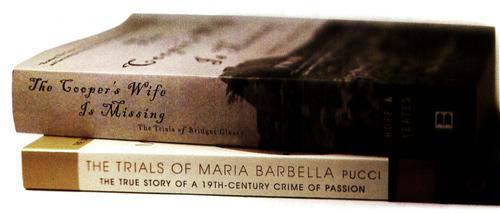Sign up for the Family Tree Newsletter Plus, you’ll receive our 10 Essential Genealogy Research Forms PDF as a special thank you!
Get Your Free Genealogy Forms
"*" indicates required fields

Genealogists love a good mystery. That’s one reason they’re drawn to family history — the need to solve the puzzle of who their ancestors were. Now you can combine your love for reading mysteries with history and genealogy. Here are some true-life, historical murder mysteries with a family history twist. To reconstruct these fascinating cases, the authors relied on the same sources genealogists use.
1. Blood Washes Blood: A True Story of Love, Murder, and Redemption Under the Sicilian Sun by Frank Vivano (Pocket Books). A legendary bandit known as “the Monk” wandered the hills of Sicily more than a century ago. By night, dressed in a priestlike robe, he robbed the wealthy and instilled fear in those who crossed his path — until one night, on a deserted country road, when the Monk met a hail of bullets that took his life. The Monk’s great-great grandson, author Frank Vivano, traveled to Sicily to find the truth that would break an 80-year code of silence. Blood Washes Blood is a story of the powerful relationship between an immigrant grandfather and his American-born grandson, and the unsolved murder of their namesake that haunted them. As a journalist who’s accustomed to searching out the facts, Vivano is careful to make clear what is fact and what is speculation.
2. The Cooper’s Wife is Missing: The Trials of Bridget Cleary by Joan Hoff and Marian Yeates (Basic Books). On March 15, 1895, 28-year-old Bridget Cleary, a cooper’s wife, disappeared from her cottage in rural County Tipperary, Ireland. Rumors circulated that she ran off with the egg man, but the most widely held opinion was that Bridget had gone off with the fairies. When her body was discovered seven days later — bent, broken and badly burned in a shallow grave — the grisly truth came to light. For almost a week before her death, Bridget had been confined, ritually starved, threatened, abused, exorcised and finally burned to death by her husband and her father, who confused a case of bronchitis with possession by fairies. Although this is a fascinating account of the impact of fairy culture on the rural peasantry, the authors’ historical and political context goes to the extreme in some chapters and loses the reader, whose main interest is what happened to Bridget Cleary.
3. The Murder of Helen Jewett: The Life and Death of a Prostitute in Nineteenth-Century New York by Patricia Cline Cohen (Vintage Books). The murder of a young prostitute made headlines in New York City and around the country in 1836. From her beginnings as a servant girl in Maine, Helen Jewett refashioned herself, using four aliases, into a highly paid courtesan. Jewett captivated her customers by writing them seductive letters. When Jewett was found dead, police arrested Richard Robinson, the son of an established Connecticut family, for her murder. Historian Patricia Cline Cohen meticulously researches the case, as well as both Jewett’s and Robinson’s family history, although some of this extensive background material seems as if it’s included to satisfy critiques of academic colleagues, rather than appeal to a popular audience.
4. The Mysterious Death of Mary Rogers: Sex and Culture in Nineteenth-Century New York by Amy Gilman Srebnick (Oxford University Press). Mary Rogers, a young woman known popularly as “The Beautiful Cigar Girl,” disappeared without a trace from her New York City boarding-house in the summer of 1841. Three days later, her body, badly bruised and waterlogged, was found floating in the Hudson River, just a few feet from the New Jersey shore. This unsolved murder case received endless publicity at the time, causing Edgar Allan Poe to base one of his detective stories, “The Mystery of Marie Roget,” around it. Historian Amy Gilman Srebnick thoroughly researches and documents information on Mary Rogers, some of her family history, events and people surrounding this interesting case. Like Cohen’s Helen Jewett, some of the extensive background material feels as if its sole purpose is to appease academic colleagues, rather than entice a popular reading audience.
5. The Trials of Maria Barbella: The True Story of a 19th-Century Crime of Passion by Idanna Pucci (Random House). In New York in 1895, a 22-year-old Italian seamstress named Maria Barbella was accused of killing the man who’d raped her, promised to marry her and was about to abandon her. Barbella’s sensational trial was conducted in English — a language she didn’t understand — and she became the first woman sentenced to die in the newly invented electric chair. In this page-turning account, Pucci tells the story that’s part of her own family history: She’s the great-granddaughter of Cora Slocomb, the American-born Italian aristocrat whose advocacy saved Barbella’s life. The narrative is engagingly written — this is a book you’ll find hard to put down.
From the June 2002 issue of Family Tree Magazine
ADVERTISEMENT

